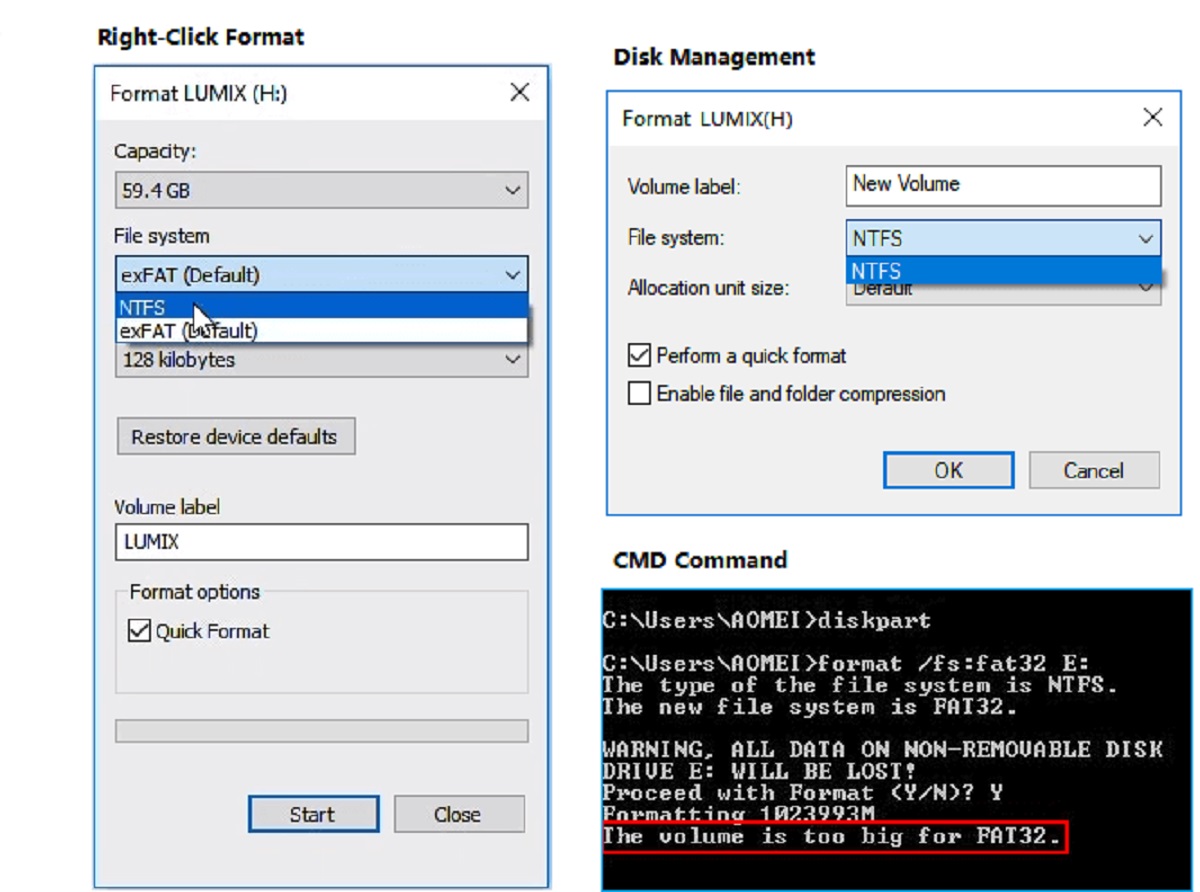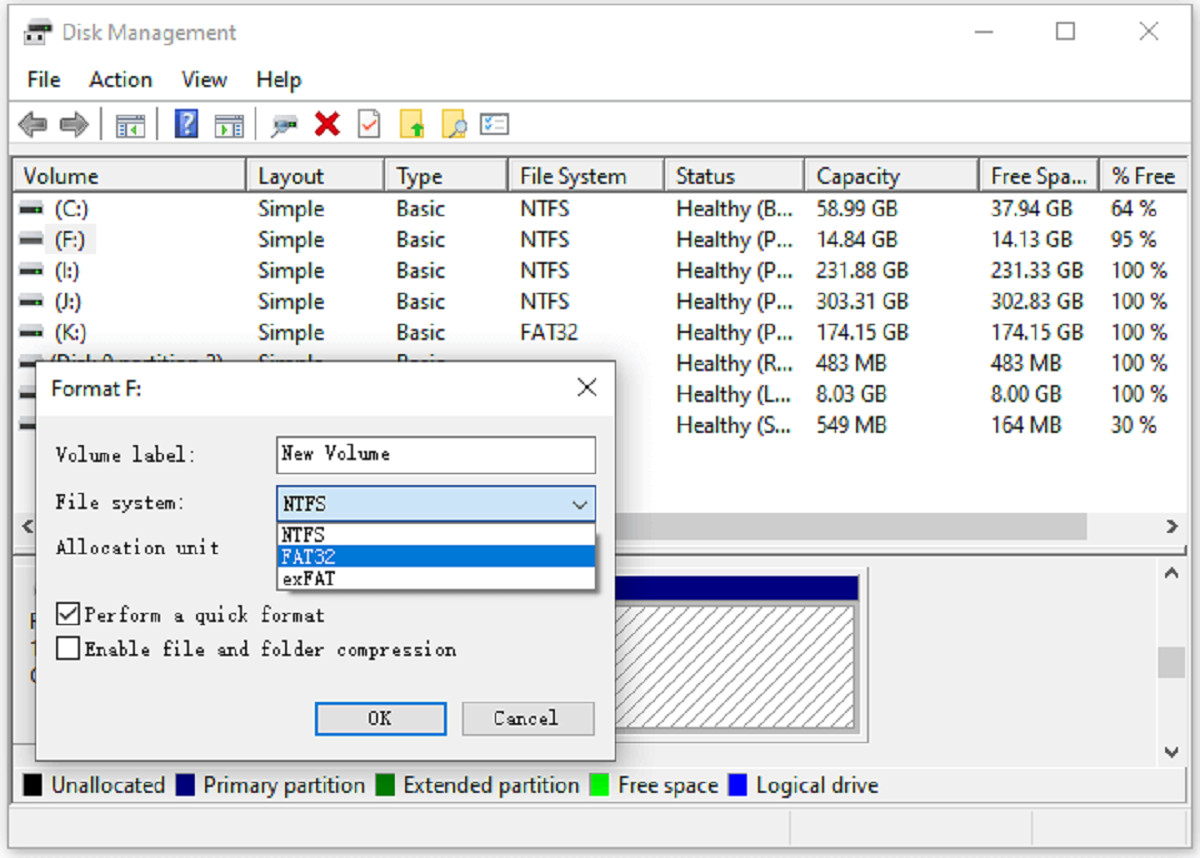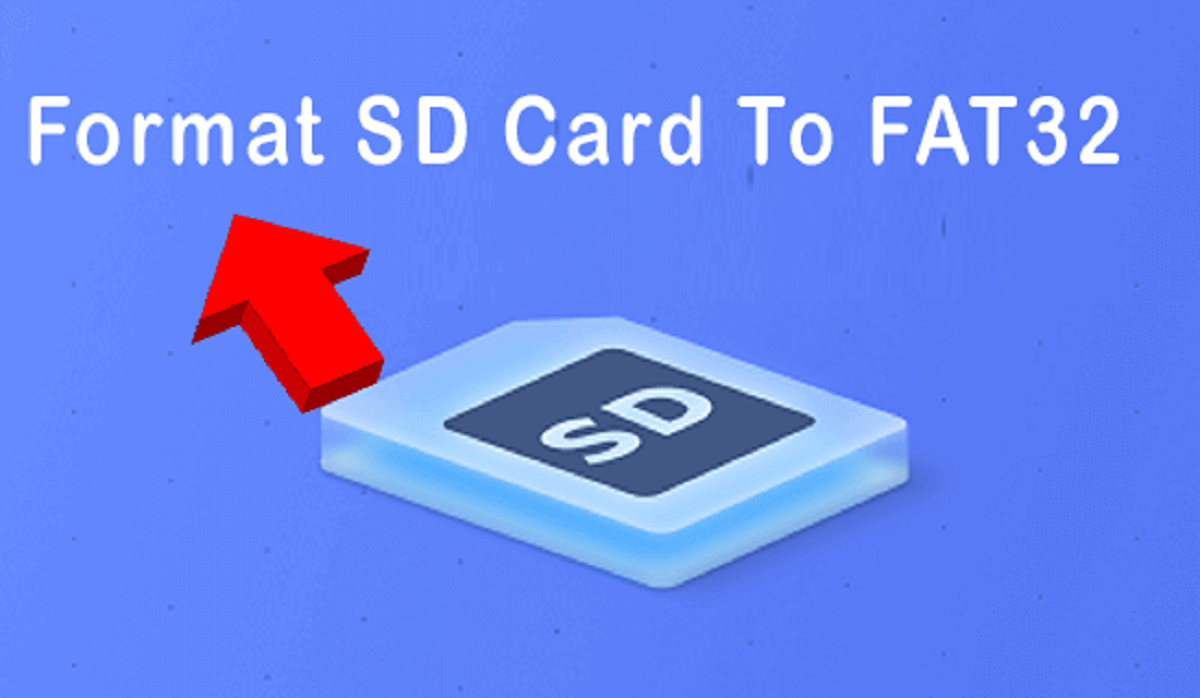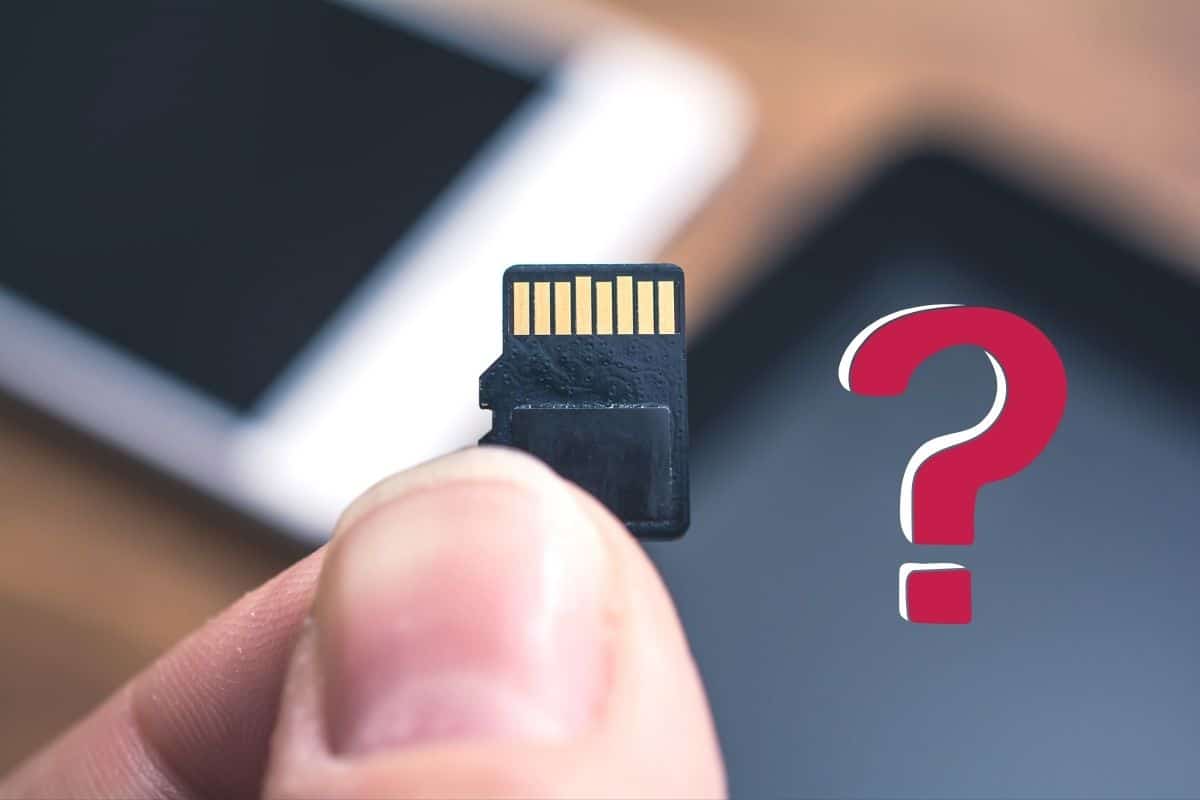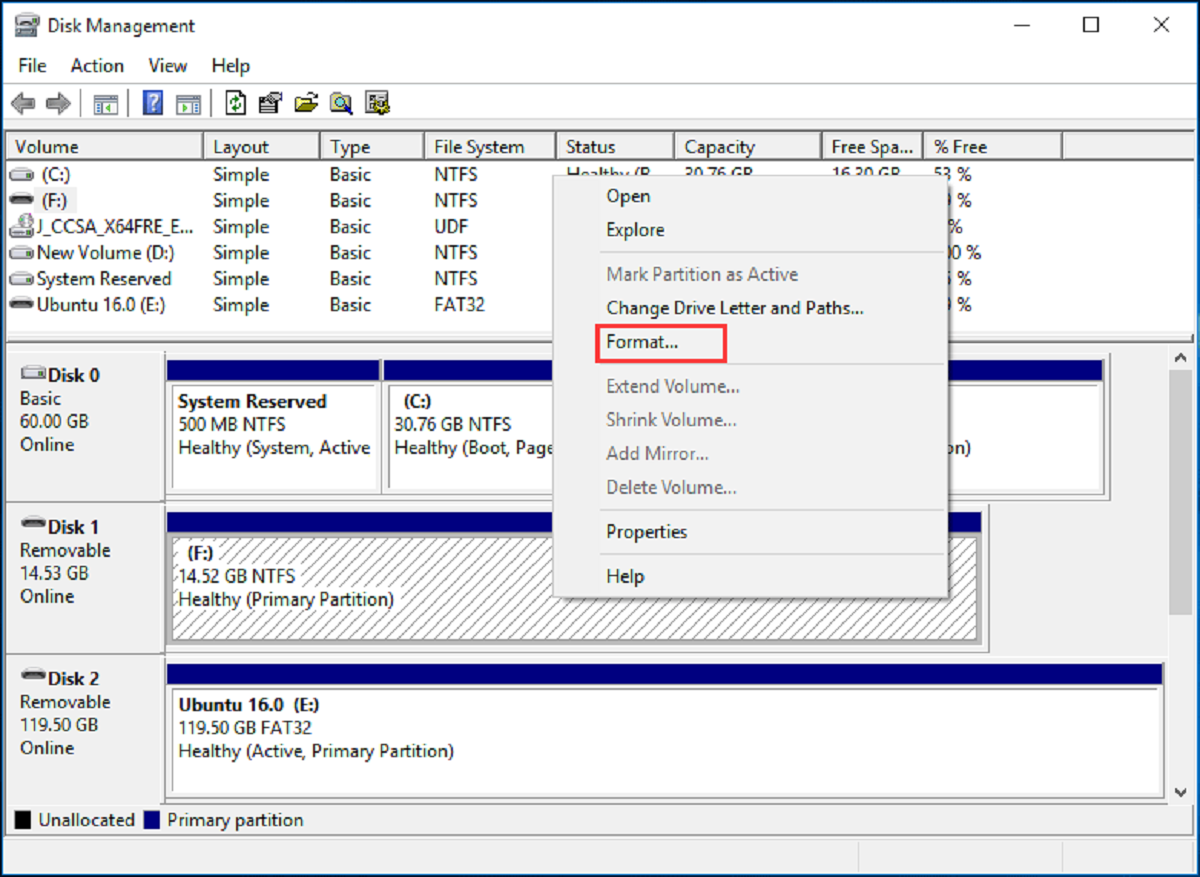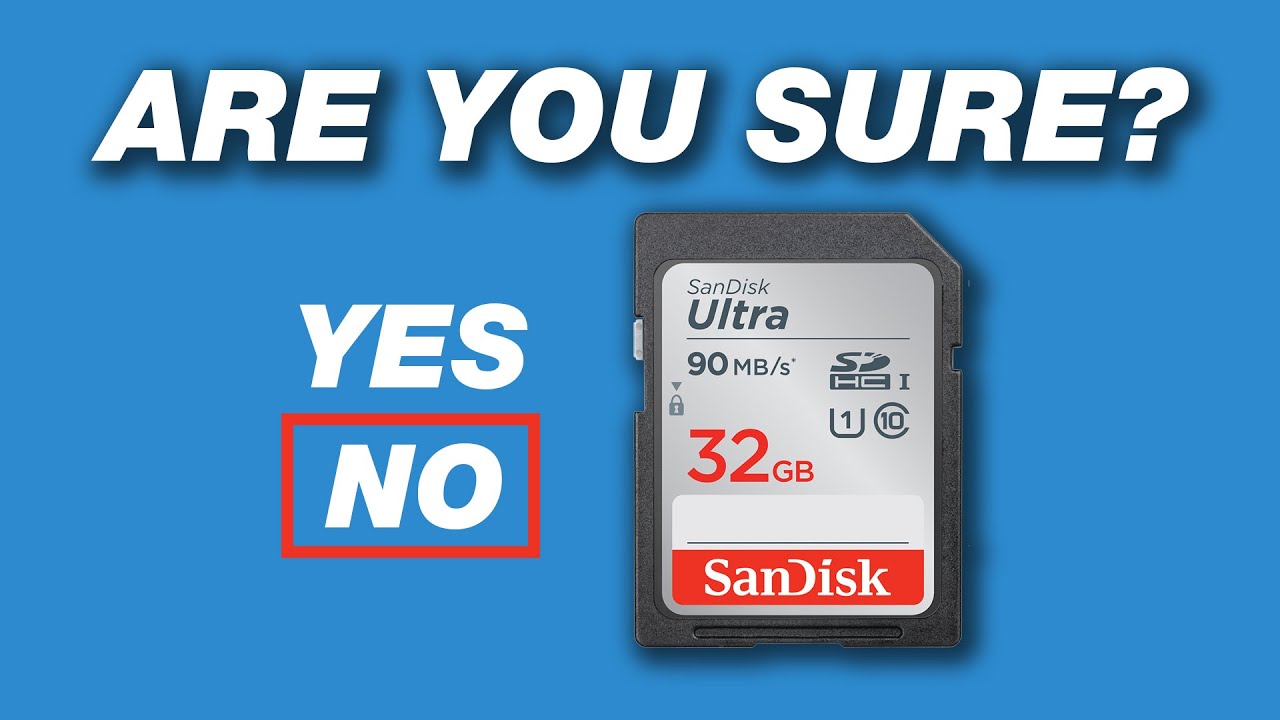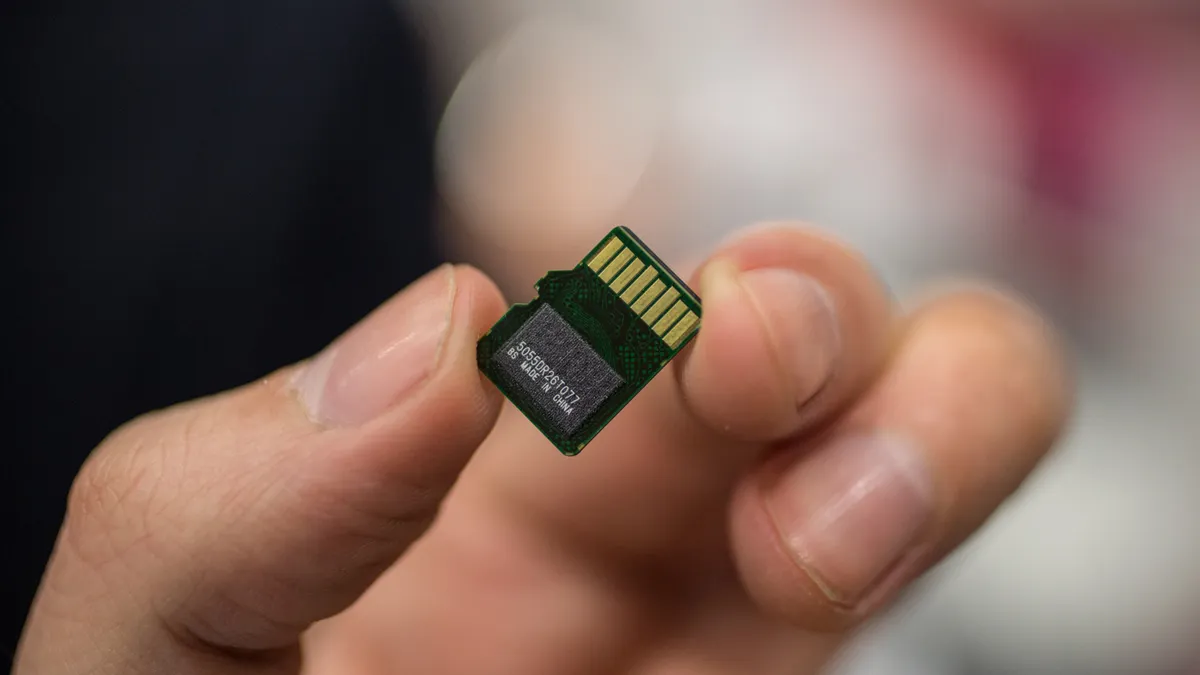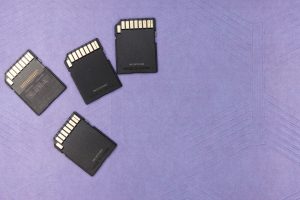Introduction
Welcome to the world of digital storage! If you own a Mac and frequently use SD cards to expand your device’s storage capacity, you may have encountered the need to format them. Formatting an SD card is the process of preparing it for use with a specific file system. One commonly used file system is FAT32, which is compatible with both Mac and Windows operating systems.
Whether you want to use the SD card to store media files, transfer data between devices, or create a portable storage solution, formatting it to FAT32 can provide the required compatibility across different platforms. This article will guide you through various methods you can use to format an SD card to FAT32 on your Mac.
Before we dive into the methods, it’s important to note that formatting will erase all data on the SD card. Therefore, it is crucial to back up any important files before proceeding with the formatting process.
Now that you’re aware of the basics, let’s explore the different methods available to format an SD card to FAT32 on your Mac. We’ll cover using the built-in Disk Utility, utilizing the Terminal, as well as considering third-party software options.
What is an SD card?
An SD card, short for Secure Digital card, is a type of portable storage device commonly used in various electronic devices like digital cameras, smartphones, tablets, and even laptops. SD cards have become a popular choice for expanding storage capacity due to their compact size, high capacity, and compatibility with a wide range of devices.
The SD card format was developed by the SD Association, which sets the standards and specifications for SD cards. There are different variants of SD cards available, including SDHC (Secure Digital High Capacity), SDXC (Secure Digital eXtended Capacity), and microSD cards.
SD cards use flash memory technology to store data. Flash memory is a type of non-volatile memory that retains stored information even when power is disconnected. This makes SD cards ideal for transferring and storing files, such as photos, videos, documents, and music.
The capacity of an SD card can vary, ranging from a few gigabytes (GB) to several terabytes (TB) in the case of SDXC cards. The larger the capacity, the more data you can store on the card.
SD cards also come in different speed classes, denoted by a number within a circle on the card. This class rating indicates the minimum data transfer rate, with higher class numbers offering faster performance. For example, a Class 10 SD card provides faster read and write speeds compared to a Class 4 card.
Additionally, SD cards often feature write protection switches that prevent accidental deletion or modification of the data stored on the card. By sliding the switch to the lock position, you can safeguard important files from being altered or erased unintentionally.
Overall, SD cards have revolutionized the way we store and transfer data. Whether you need extra storage for your photography hobby, expand your smartphone’s memory, or transfer files between devices, SD cards offer a convenient and reliable solution.
Why format an SD card to FAT32?
When it comes to formatting an SD card, the choice of file system is crucial, as it determines the card’s compatibility with different devices and operating systems. One common and widely supported file system is FAT32 (File Allocation Table 32).
Here are a few reasons why you might want to format an SD card to FAT32:
- Compatibility: FAT32 is a universally supported file system that works seamlessly with both Mac and Windows operating systems. This makes it an ideal choice if you plan to use the SD card across different devices or share files with others.
- Device Compatibility: Many electronic devices, including cameras, game consoles, and multimedia players, are designed to work with FAT32-formatted storage media. By formatting your SD card to FAT32, you can ensure broad compatibility and eliminate any issues when using the card with various devices.
- Large File Support: FAT32 supports file sizes of up to 4GB, which is sufficient for most applications. If you frequently deal with large media files, such as high-resolution videos or disk images, formatting your SD card to FAT32 allows you to store and access these files without any limitations.
- Interoperability: FAT32-formatted SD cards can be easily read and written to by both Mac and Windows systems without the need for additional software or drivers. This makes it extremely convenient when transferring files between different computers or sharing content with others.
- Flexibility: Unlike other file systems like NTFS (New Technology File System) or exFAT (Extended File Allocation Table), FAT32 is straightforward and easy to manage. It is supported out of the box by most operating systems and requires minimal configuration or setup. This simplicity makes it an accessible option for users of all levels of technical expertise.
By formatting your SD card to FAT32, you ensure maximum compatibility, seamless interoperability, and the ability to work with large files. It is important to note that while FAT32 offers numerous advantages, it also has certain limitations, such as a maximum volume size of 32GB and a maximum file size of 4GB. Depending on your specific requirements, you may need to consider alternative file systems like exFAT or NTFS.
In the following sections, we will explore different methods to format an SD card to FAT32 on a Mac, giving you the flexibility and convenience you need to manage your portable storage efficiently.
Precautions before formatting an SD card
Before you embark on formatting an SD card, there are a few important precautions to keep in mind. These measures will help ensure a smooth and error-free formatting process, as well as prevent any potential data loss. Here are some essential precautions to consider:
- Backup your data: Formatting an SD card will erase all data stored on it. Therefore, it is crucial to create a backup of any important files before proceeding with the formatting process. This way, you can restore your data after formatting or if anything goes wrong during the process.
- Check compatibility: Before formatting to FAT32, it is essential to ensure that your device supports this file system. Some devices may have limitations or restrictions when it comes to reading or writing to certain file systems. Refer to your device’s user manual or specifications to confirm FAT32 compatibility.
- Remove write protection: If your SD card has a physical write protection switch, make sure it is in the unlock position. Write protection prevents any modifications or deletions, including formatting the SD card. Slide the switch to the unlock position before proceeding.
- Verify power supply: Ensure that your Mac and SD card reader have a stable power supply throughout the formatting process. Sudden power loss or interruptions during formatting can result in data corruption or other issues.
- Use trusted formatting methods: Stick to reputable methods and tools for formatting your SD card. While there are several options available, using reliable methods like the built-in Disk Utility or trusted third-party software will help minimize the risk of errors or data loss during formatting.
- Be patient: Formatting an SD card may take a few minutes, depending on the size and speed of the card. Avoid interrupting the process or removing the SD card prematurely. It is crucial to allow the formatting process to complete in order to ensure the integrity of the card’s file system.
By following these precautions, you can proceed with confidence when formatting your SD card. Remember to back up your data, ensure compatibility, remove any write protection, maintain a stable power supply, use trusted methods, and allow the formatting process to complete uninterrupted.
Now that we’ve covered the necessary precautions, let’s explore the different methods available to format an SD card to FAT32 on your Mac.
Method 1: Using Disk Utility
If you have a Mac, you can use the built-in Disk Utility tool to format your SD card to FAT32. Disk Utility is a powerful and user-friendly application that allows you to manage and format storage devices. Follow these steps to format your SD card using Disk Utility:
- Connect your SD card to your Mac using a card reader or the SD card slot.
- Launch Disk Utility. You can find it by going to “Applications” > “Utilities” > “Disk Utility.”
- In Disk Utility, locate your SD card from the list of available drives and click on it.
- Click on the “Erase” tab at the top of the Disk Utility window.
- Choose a suitable name for your SD card in the “Name” field. This name will be visible when you access the card on your Mac or other devices.
- From the “Format” dropdown menu, select “MS-DOS (FAT)” or “exFAT” if “MS-DOS (FAT)” is not available.
- Choose the “Master Boot Record” scheme.
- Finally, click on the “Erase” button to start the formatting process.
- Wait for Disk Utility to format your SD card. Once the process is complete, you will see a confirmation message.
- Eject your SD card safely from your Mac.
Using Disk Utility provides a straightforward and reliable method to format an SD card to FAT32 on your Mac. Remember to double-check that you have selected the appropriate format and scheme before proceeding with the formatting process.
In the next section, we will explore another method to format an SD card to FAT32 using the Terminal on your Mac.
Method 2: Using Terminal
If you’re comfortable with using Terminal on your Mac, you can also format your SD card to FAT32 using command-line commands. Here’s how:
- Connect your SD card to your Mac using a card reader or the SD card slot.
- Open Terminal by going to “Applications” > “Utilities” > “Terminal.”
- Type
diskutil listin Terminal and press Enter. This will display a list of all connected storage devices, including your SD card. - Identify your SD card from the list based on the disk identifier, such as “/dev/disk2”. Make sure you select the correct disk to avoid formatting the wrong device.
- Once you have identified the correct disk, enter the command
diskutil eraseDisk FAT32 SD_CARD_NAME MBRFormat /dev/diskX, replacing “SD_CARD_NAME” with your desired name for the SD card and “X” in “diskX” with the disk number of your SD card. - Press Enter to execute the command. Terminal will display the formatting progress.
- Wait for the formatting process to complete. Once finished, Terminal will display a confirmation message.
- Ensure that the formatting was successful by double-checking the SD card in Finder or Disk Utility.
- Eject your SD card safely from your Mac.
Using Terminal gives you more control over the formatting process and can be a quicker option for experienced users. However, be cautious when using Terminal as commands are executed directly, and any mistakes can result in data loss or unintended consequences.
Now that you’ve learned how to format an SD card to FAT32 using Disk Utility and Terminal, let’s explore another alternative method in the next section.
Method 3: Using third-party software
If you prefer using third-party software for formatting your SD card to FAT32 on your Mac, there are several reliable applications available that offer additional features and flexibility. Here are a few popular options:
- SD Card Formatter: This is an official tool provided by the SD Association specifically designed for formatting SD/SDHC/SDXC cards. It ensures compatibility and optimal performance with SD cards and supports FAT32 as one of the formatting options.
- DiskGenius: DiskGenius is a comprehensive disk management software that allows you to format, partition, and manage various storage devices. It supports both Mac and Windows systems and provides easy formatting options, including formatting to FAT32.
- Paragon Partition Manager: Paragon Partition Manager is a powerful disk management tool that offers advanced partitioning and formatting options. It supports various file systems, including FAT32, and allows you to easily format SD cards with a user-friendly interface.
When utilizing third-party software, it is essential to download and install the software from reputable sources to ensure its reliability and security. Always follow the instructions provided by the software developer to format your SD card accurately.
Remember to back up any important data on the SD card before proceeding with the formatting process, as third-party software may have unique features and settings that could potentially affect the data stored on the card.
By using third-party software, you can take advantage of additional features and a more intuitive user interface, making it easier to format your SD card to FAT32 on your Mac.
Now that we have explored various methods to format an SD card to FAT32 on your Mac, you can choose the option that suits your needs best.
Conclusion
Formatting an SD card to FAT32 on your Mac is a straightforward process that allows you to enhance compatibility and flexibility when using the card across different devices and operating systems. Whether you choose to use the built-in Disk Utility, the Terminal, or third-party software, each method provides a reliable way to format your SD card.
Before you begin formatting, remember to back up any important data on the SD card to prevent accidental data loss. Additionally, ensure that your device supports FAT32 and remove any write protection before proceeding with the formatting process.
If you prefer using the built-in tools on your Mac, Disk Utility offers a user-friendly interface for formatting your SD card to FAT32. Alternatively, if you’re comfortable with command-line commands and seek more control, the Terminal provides a powerful option for formatting your SD card.
For those who prefer additional features and advanced options, third-party software like SD Card Formatter, DiskGenius, or Paragon Partition Manager can provide a more comprehensive disk management experience while supporting FAT32 formatting.
Regardless of the method you choose, following precautions and ensuring a stable power supply throughout the formatting process is crucial to avoid any potential issues or data corruption. Remember to be patient and allow the formatting process to complete uninterrupted.
Now that you have a variety of methods at your disposal, you can confidently format your SD card to FAT32 on your Mac, providing compatibility and convenience for your storage needs.







